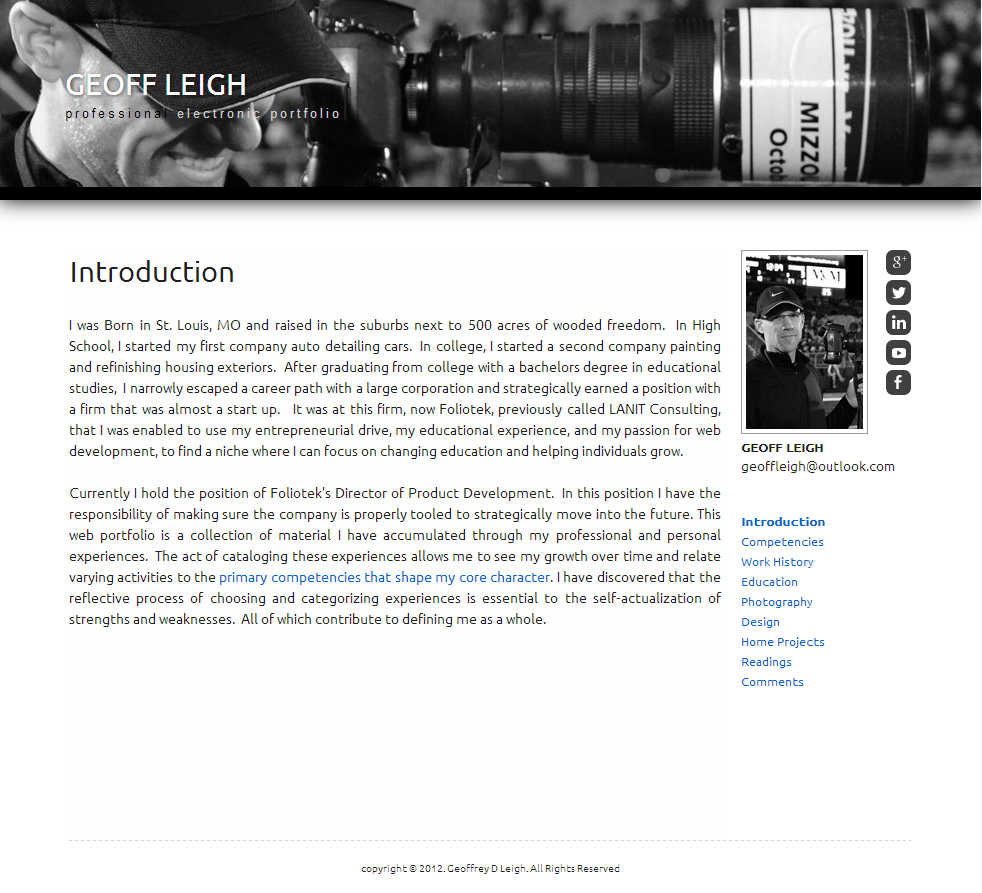What is an ePortfolio
I’m going to guess you’ve heard this term used in plenty of different ways. For example, maybe you have some friends in the design or art field and they were discussing their “eportfolios,” possibly you were in class at school and you were told to build an “eportfolio”, or maybe you’re in touch with one of the latest trends, building an eportfolio to compliment your plain jane boring resume. What we have here is the same term being thrown around for a variety of purposes. So what is an eportfolio? Well, it’s a two for one. Let me explain.
TWO FOR ONE
On the surface, an eportfolio is a visual product that is shared with an audience often defined by you. It is the end result (product) of organizing your stuff (I like to think of them as your experiences) for some entity. So, in creating an eportfolio, you will focus your thoughts on the audience who will be consuming whatever you decide to present in your eportfolio. You need to carefully consider what they want to see, which in turn forces you to consider how that information should be organized and visually presented.

The Product
For example, if the audience for your eportfolio is a potential employer, you are going to put material (examples of experiences) in your eportfolio that demonstrates why you should be considered for that job. You are going to strategically organize your eportfolio so that it fits what that employer wants to see. Why? Because it will be acting as a virtual introduction to who you are, before that potential employer ever calls you in for an interview.
But that’s just the visual end product. That’s like the icing on the cake or the fixings on a burger. The real meat of an eportfolio isn’t the pretty, visually stimulating end product that is produced, it’s the process you go through to create that visually stimulating product.
The Process
Here’s why. As you rehash your experiences trying to decide the best items to include in your eportfolio; you are re-engaging with those experiences. You are pulling them to the surface of your brain and revisiting how they are relevant to the audience that will be viewing them. Without even realizing it, you are taking the steps to transfer knowledge from one area of your life to another. This is a much deeper synthesis of information than simple memorization of facts. It’s deep learning that has tremendous intrinsic value.
Let’s go back to the idea of building an eportfolio for a potential employer. You can’t find a 5 step interview preparation process where one of the steps doesn’t involve “knowing yourself.” There are few better paths for self-actualization than revisiting key experiences of your life. Once you take the time to reflect on those experiences, I assure you, you will be better prepared for the interview. This means the eportfolio is a win-win. First, it is a win because the positive visual stimulus it provides is compared to the drab resumes of others, this will actually get you in the door for an interview. Secondly, because you took the time to build the eportfolio, you are better prepared for the interview.
The Answer
So, back to the beginning, “what is an eportfolio?”. Well it is really two things rolled into one. It’s a visual product you can share with any audience and it is a reflective process that causes deeper learning.